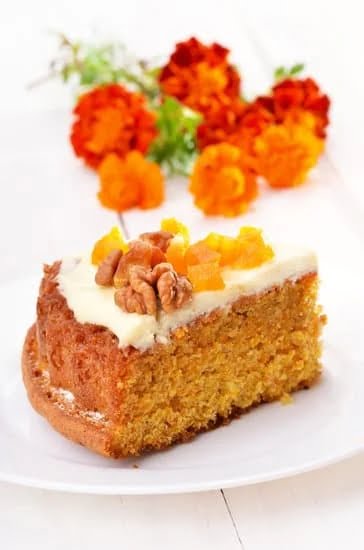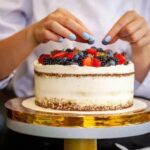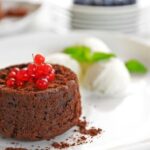Timing is everything when it comes to baking and decorating a cake. Whether you’re a seasoned baker or just starting out, understanding the importance of timing is essential for achieving beautiful, delicious results. In this article, we will delve into the intricacies of cake baking and decorating, specifically focusing on the question: How early can you bake a cake before decorating?
One of the common concerns in the cake baking process is knowing when to start and how early you can bake your cake before moving on to decorating it. Timing plays a crucial role in ensuring that your cakes have the ideal texture, moisture, and flavor. Without proper timing, your cake may not set properly after decoration or could become dry and crumbly.
In this article, we will address these concerns and provide expert advice on timing for both baking and decorating cakes. From understanding the role of cooling in allowing cakes to settle before decoration to knowing when to remove cakes from their pans, we will guide you through each step with precision. Additionally, we will explore various methods of storing baked cakes and discuss the art of freezing them for extended shelf life.
By mastering timing techniques in cake baking and decorating, you can elevate your skills and create stunning creations every time. So let’s dive into the world of timing in cake baking and decorating, unraveling its complexities while discovering strategies to enhance your culinary prowess.
The Role of Cooling
Timing plays a crucial role in the cake baking and decorating process. It is essential to understand when to perform each step to ensure optimal results. One common question that arises is how early one can bake a cake before decorating it. In this article, we will explore this topic and provide insights into the appropriate timing for baking and decorating cakes.
Once a cake is baked, it is important to allow it to cool completely before decorating. Cooling not only helps the cake settle, but it also improves the texture and makes handling easier during decoration. When a cake is taken out of the oven, its structure is still delicate, and if you rush through the cooling process, it may crumble or break apart.
By allowing the cake to cool at room temperature for approximately 20-30 minutes in the baking pan, you give it time to firm up without compromising its moisture. Afterward, gently transfer the cooled cake onto a wire rack for further cooling. Depending on its size and thickness, most cakes should be left to cool completely for at least an hour or two before moving on to the next step of decoration.
| Cake Type | Recommended Cooling Time |
|---|---|
| Sponge Cake | 1-2 hours |
| Layer Cake | 2-3 hours |
| Pound Cake | 3-4 hours |
It’s important to note that this information serves as a general guideline, and specific recipes or cake designs may require variations in cooling times.
When to Remove Cakes from the Pans
One crucial step in the cake baking process is knowing when to remove the cakes from their pans. Timing plays a key role in ensuring that the cakes are baked to perfection and are ready for decorating.
The appropriate time to remove the cakes from their pans depends on several factors, such as the type of cake, its size, and the recipe instructions. By understanding these factors and following some guidelines, you can confidently remove your cakes from the pans at the right time.
Different types of cakes have different baking times and require varying amounts of cooling time in their pans. For example, delicate sponge cakes typically require a shorter baking time and need to cool completely in their pans to maintain their structure. On the other hand, denser cakes like pound cakes or fruitcakes may need longer baking times and can be removed from their pans after a shorter period of cooling.
It’s essential to carefully read your recipe instructions and follow any specific recommendations regarding removing the cakes from their pans. Some recipes may suggest allowing the cake to cool slightly in the pan for easier removal, while others may advise removing it immediately after baking. Pay attention to these instructions as they have been tested by professionals for optimal results.
To further guide you in determining when to remove your cakes from their pans, here are some general guidelines:
- Check for doneness: Before considering removing your cake from its pan, make sure it is fully baked by inserting a toothpick or skewer into the center. If it comes out clean or with just a few crumbs attached, it indicates that your cake is ready.
- Allow slight cooling: Once fully baked, let your cake cool on a wire rack inside its pan for about 10-15 minutes. This short cooling period helps the cake set enough for easy removal.
- Use gentle methods for removal: After letting your cake cool slightly, gently run a small offset spatula or a butter knife around the edges to loosen it from the sides of the pan. Place a wire rack on top of the pan, hold it in place, and carefully invert everything to release your cake onto the rack.
Overall, the timing of removing cakes from their pans depends on the specific recipe instructions and cake type. By being attentive to these factors and following some general guidelines, you can ensure that your cakes are perfectly baked and ready for decorating.
| Type of Cake | Recommended Cooling Time in Pan |
|---|---|
| Sponge Cakes | Cool completely in pan to maintain structure |
| Denser Cakes | Shorter cooling time before removing from pan |
| All Cake Types | About 10-15 minutes after fully baked |
Storing Baked Cakes
When it comes to cake baking and decorating, timing is crucial. But what do you do if you need to bake a cake in advance before decorating? The key is to properly store your freshly baked cakes to ensure they stay fresh and moist until it’s time to decorate.
There are several methods for storing baked cakes, each with its own benefits. One common method is wrapping the cooled cakes tightly in plastic wrap or aluminum foil and storing them at room temperature. This helps retain moisture and prevents the cake from drying out. However, make sure to use airtight containers or wrap the cakes well to keep them from absorbing any unwanted flavors from the surrounding environment.
If you’re looking to store your cakes for a longer period, consider refrigerating them. Place the cooled cakes in airtight containers or wrap them in plastic wrap before placing them in the refrigerator. While refrigeration can help extend the shelf life of your cakes, be cautious as some cakes can become dry when stored for an extended period in the fridge. It’s best to consume refrigerated cakes within 2-3 days.
For an even longer storage option, freezing your baked cakes is ideal. Before freezing, it’s important to let your cakes cool completely. Once cooled, double-wrap them tightly with plastic wrap and place them in freezer-safe containers or resealable bags. Frozen cakes can typically be stored for several months without any significant loss of quality, but it’s important to label each container with the date so you know how long they’ve been frozen.
When it’s time to decorate your stored cake, make sure to thaw it properly first. Transfer the cake from the freezer to the refrigerator overnight or leave it at room temperature for a few hours until completely thawed before moving on to decorations.
This slow thawing process will help prevent any condensation issues that could affect the texture of your cake. Once thawed, you can proceed with decorating as usual and enjoy a fresh-tasting cake, even if it was baked in advance.
Properly storing your freshly baked cakes ensures that they remain moist and delicious until it’s time to decorate. Whether you choose to store at room temperature, in the refrigerator, or in the freezer, following these tips will help preserve the quality of your cake and make your decorating process more convenient.
The Art of Freezing
Freezing cakes is a great option for extending their shelf life and allowing for more flexibility in the cake baking and decorating process. Freezing a cake can be particularly useful when you need to bake the cake in advance but want it to still taste fresh and moist when it’s time to decorate and serve.
When freezing a cake, it’s important to ensure that it is properly wrapped and stored to maintain its quality. It is recommended to first let the cake cool completely before wrapping it tightly in plastic wrap or aluminum foil. This will help prevent any moisture from escaping and keep the cake from drying out in the freezer. For added protection, place the wrapped cake in a freezer-safe bag or container.
It’s also important to label your frozen cakes with the date they were baked so you can keep track of how long they have been stored. As a general rule, most cakes can be stored in the freezer for up to three months without significant loss of flavor or texture. However, always check for any signs of freezer burn or deterioration before using a frozen cake.
When you’re ready to decorate your frozen cake, it’s best to allow it to thaw gradually in the refrigerator overnight. This slow thawing process helps maintain the moisture in the cake while ensuring that it thaws evenly. Once fully thawed, you can proceed with decorating as you would with a freshly baked cake.
Freezing your cakes not only extends their shelf life but also offers convenience and flexibility in your baking and decorating schedule. With careful wrapping, storage, and thawing techniques, you can ensure that your cakes taste just as delicious as if they were made fresh on the day of serving. So don’t hesitate to embrace the art of freezing and elevate your cake baking and decorating game.
Checking for Moisture
One important element to consider when baking a cake before decorating is moisture. Moisture is essential for achieving a delicious and tender cake. However, excess moisture can lead to a cake that is difficult to work with when it comes to decorating. This is where the concept of crumb coating comes in.
Crumb coating involves applying a thin layer of frosting or icing to the cake before the final coat. The purpose of this step is to seal in the crumbs and provide a smooth surface for the final decoration. When done correctly, crumb coating helps retain moisture in the cake while preventing loose crumbs from ruining your final design.
When it comes to timing, crumb coating can be done relatively early in the cake baking process. As soon as the cake has cooled completely, you can apply a thin layer of frosting or icing to create that protective barrier against crumbs. This not only helps maintain the cake’s moisture but also simplifies the later stages of decoration by providing a smooth canvas.
Here are some key steps to follow when crumb coating your cake:
- Ensure that your cake has cooled completely before applying the first layer of frosting or icing.
- Use an offset spatula or palette knife to spread a thin layer of frosting evenly across the entire surface of the cake.
- Pay close attention to any gaps or uneven areas, and ensure they are covered with frosting.
- Once you have finished applying the first layer, refrigerate the cake for about 15-20 minutes to allow the crumb coat to set.
- After chilling, you can then proceed with adding additional layers of frosting or icing to achieve your desired design.
By incorporating crumb coating into your early decorating process, you can effectively manage moisture levels while simplifying your overall decoration efforts. This technique ensures that your cakes remain moist and flavorful without compromising on aesthetics.
Intricate Cake Designs
Planning for Complex Cake Designs
When it comes to intricate cake designs and detailed decorations, timing becomes a crucial factor in ensuring a successful outcome. These types of cakes often require multiple elements, such as fondant, gum paste flowers, or elaborate piping work. Planning and coordinating the baking and decorating times is essential to achieve the desired results.
One strategy to consider when working on complex cake designs is breaking down the process into manageable steps. Begin by creating a timeline that outlines each task, from baking the cake layers to adding the final touches. This will help ensure that you allocate enough time for each step and prevent any last-minute rush.
Baking in Advance
For intricate cake designs, it is common to bake the cake layers in advance. Baking earlier allows ample time for cooling and settling, which is crucial before moving on to the decorating phase. As mentioned earlier in this article, allowing cakes to cool completely helps maintain their texture and makes them easier to handle during decoration.
If you decide to bake your cakes ahead of time, it is important to store them properly. Wrap each layer tightly with plastic wrap or place them in airtight containers before refrigerating them. This will keep the cakes fresh while preserving their moisture content.
The Role of Freezing
Freezing can be an effective solution when dealing with intricate cake designs that require more preparation time than what can be accommodated on the day of decoration. Freezing not only extends the shelf life of your baked goods but also makes handling and decorating certain types of cakes easier.
To freeze your cakes successfully, it is crucial to use proper containers that are designed for freezing purposes. Opt for freezer-safe bags or wrap each layer individually with plastic wrap before placing them in an airtight container. It’s also important to label your containers with the date of freezing to keep track of their freshness.
By planning ahead and utilizing techniques like freezing, you can overcome the timing challenges associated with intricate cake designs. This allows you to focus on the detailed decorations without feeling rushed, resulting in a beautifully adorned cake that will impress your guests.
Balancing Flavors and Freshness
Deciding When to Assemble
When it comes to cake assembly, timing is crucial to ensure that the flavors are balanced and the final product is fresh. The decision of when to assemble a cake largely depends on various factors such as the ingredients used, the type of filling or frosting being used, and personal preference.
If your cake requires refrigeration or contains perishable ingredients such as fresh fruit or dairy-based fillings, then assembling the cake just before serving is recommended. This will help maintain the freshness of these ingredients and prevent any spoilage. Additionally, if you plan on using a whipped cream or a mousse-like filling, it is best to assemble your cake closer to serving time to preserve its light and airy texture.
On the other hand, if your cake does not contain any perishable ingredients or requires no refrigeration, you may have more flexibility in terms of assembling ahead of time. For example, buttercream frosted cakes can be assembled a few hours before serving without compromising taste or texture.
Preserving Flavor and Texture
When assembling a cake in advance, it’s important to take steps to ensure that the flavors are preserved and the texture remains moist. One way to preserve flavor is by using simple syrup or flavored syrups to brush each layer of cake before adding fillings or frostings. This helps keep the cake moist and adds an extra burst of flavor.
To prevent your assembled cake from drying out, it’s crucial to store it properly. If possible, keep the assembled cake in an airtight container at room temperature. Alternatively, you can also cover it with plastic wrap tightly before storing in the refrigerator. It’s important to note that refrigerating decorated cakes can sometimes alter their texture slightly, so consider this when deciding where to store your completed creation.
Saving Decorating Time
While some decorations require last-minute assembly, there are ways to save time by preparing certain elements in advance. For example, if you plan on adding fresh flowers to your cake, you can wire or tape them ahead of time and refrigerate them separately until it’s time to assemble. Additionally, if using fondant or gum paste decorations, these can also be made in advance and stored in a cool, dry place until needed.
By balancing the flavors and preserving freshness through proper assembly timing, you can ensure that your cake tastes as delicious as it looks. Experiment with different techniques and find what works best for the specific needs of your cakes as well as considering the preferences of those enjoying your creations.
Conclusion
In conclusion, mastering the timing in cake baking and decorating is crucial for a successful outcome. By understanding the importance of allowing cakes to cool before decorating, we ensure better texture and easier handling during the decoration process.
Timing is also key when it comes to removing cakes from their pans, as factors such as cake type, size, and recipe instructions play a role. Properly storing baked cakes is essential for maintaining freshness, while freezing can be a great option for extending shelf life.
For moist cakes, early crumb coating can be done to preserve moisture and simplify the decoration process. However, when it comes to intricate cake designs and detailed decorations, challenges arise in terms of coordinating baking and decorating times. By strategizing and planning ahead, we can achieve desired results.
In some cases, it’s best to assemble a cake just before serving to balance flavors and maintain freshness. Experimenting with timing techniques that cater to specific needs will ultimately elevate your cake decorating game. So take these tips into consideration and have fun exploring the world of timing in cake baking and decorating.
Frequently Asked Questions
How long after baking a cake can you decorate it?
After baking a cake, it is generally recommended to wait until it has completely cooled before decorating it. The cooling process can range from 1-3 hours, depending on the size and thickness of the cake layers.
Decorating a cake while it’s still warm or even slightly warm can cause the decorations to melt or slide off. By allowing the cake to cool down fully, you ensure that the decorations will adhere properly and set in place.
How do you keep a cake moist overnight before decorating?
To keep a cake moist overnight before decorating, there are a few steps you can take. Firstly, ensure that the cake is covered with a layer of plastic wrap or placed in an airtight container to prevent moisture loss. This helps to retain the cake’s natural moisture and prevent drying out.
Additionally, you might consider brushing simple syrup on each layer of the cake before wrapping it up for the night. Simple syrup is made by dissolving equal parts sugar and water over heat and then cooled before using. The syrup adds extra moisture to the cake layers, keeping them moist and delicious.
How early can you decorate a cake with buttercream?
Buttercream is a popular frosting choice for cakes due to its flavor and versatility. In terms of timing, you can generally decorate a cake with buttercream as soon as it has cooled down from baking and been layered with frosting.
It’s important that the cake has cooled completely because if it’s too warm, the buttercream may become softened or even melt from the residual heat of the cake layers, making it difficult to work with and achieve desired designs. Once your buttercream-frosted cake has reached room temperature or chilled briefly in a refrigerator for added firmness, you are ready to decorate it using piping bags, spatulas, or any other creative tools you prefer!

Welcome to our cake decorating blog! My name is Destiny Flores, and I am the proud owner of a cake decorating business named Cake Karma. Our mission is to provide delicious, beautiful cakes for all occasions. We specialize in creating custom cakes that are tailored specifically to each customer’s individual needs and tastes.





